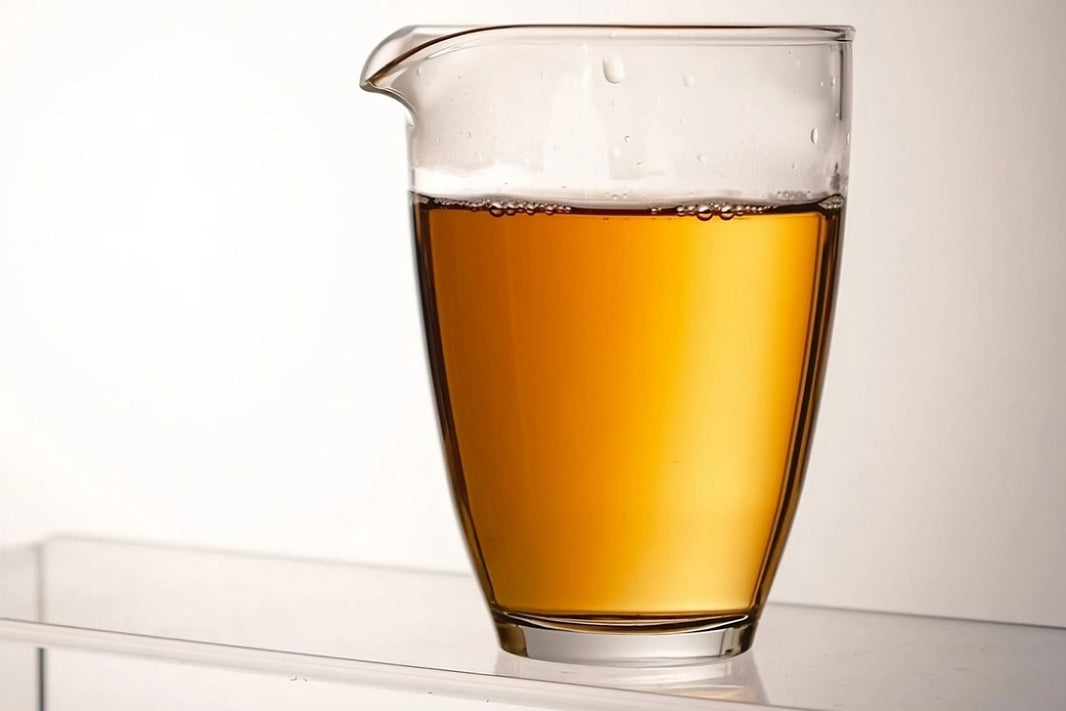Green, black, and white teas come from the youngest buds and tender leaves. They are thought to have higher caffeine levels.
Oolong tea is often made from more mature leaves, like those with one bud and two or three leaves. It has less caffeine than green and black.
Is Oolong Tea Safe for Pregnant Women?
Moderate consumption of oolong tea is considered safe for pregnant women.
The American College of Obstetricians and Gynecologists (ACOG) says to limit caffeine during pregnancy to 200mg per day.
An 8 oz cup of oolong tea has 30-60 mg of caffeine. Drinking 1-3 cups daily is usually safe, and 3-4 g of tea leaves per cup is safe for pregnancy.
How to Choose the Right Oolong Tea for Pregnant Women
Commonly, teas made from younger leaves contain higher levels of caffeine.
For instance, the traditional style Tie Guan Yin is made from younger leaves.
However, it does not mean that traditional roasted Tie Guan Yin has more caffeine than light flavor Tie Guan Yin.
Oolong tea has a wide range of oxidation levels. The oxidation process of oolong tea does not change its caffeine content;
But it affects the tea polyphenols. As the level of oxidation increases, the tea’s color, aroma, and flavor also change.
Roasting also does not change the caffeine content in oolong tea. Since the melting point of caffeine is 200°C, the roasting temperatures for oolong tea are usually much lower than this.
But, the roasting process may slow down the release of caffeine, making it more gradual.
When choosing an oolong tea for pregnancy, there's no one-size-fits-all rule - just pick the one you like best.
A safe daily amount is 1-3 cups, brewed with 3-4 grams of loose leaf per cup.
It's best to avoid tea bags. The problem with them is that they're usually made from broken tea leaves, which release caffeine quickly.
Loose-leaf oolong tea is made from whole leaves and releases caffeine slowly. You can also control the caffeine by changing the brewing method.
Our Top 5 Oolong Teas for Pregnancy
We've chosen five oolong teas that are perfect for pregnant women. Hailing from top oolong-producing regions, these teas boast medium oxidation and roasting levels.
With their floral, fruity, honey, and sweet aromas, they're especially appealing to women.
1. Su Xin Lan
Su Xin Lan is one of the famous tea cultivars from Wuyi Mountain. It has a distinctive orchid fragrance, with a flavor that stands out compared to Shui Xian and Rou Gui.
Its medium roast retains the tea’s varietal aroma, offering a sweet and smooth taste with floral and fruity notes.
2. Floral Shui Xian
Unlike Old Bush Shui Xian, this flora shuixian highlights floral and fruity notes. When brewed, its fragrance fills the room quickly.
It retains Shui Xian tea’s unique flavor with a bright golden liquor and a lingering, clean finish. And medium roasting helps preserve the shuixian's floral and fruity characteristics.
3. Traditional Tie Guan Yin
You might have had Tie Guan Yin before, but have you experienced the traditional one?
Traditional Tie Guan Yin uses a medium-oxidized process, with deeper oxidation similar to Wuyi rock tea or Phoenix Dan Cong.
This tea, grown above 2,600 feet (800m), has lasting orchid aromas with fruity, sweet, honey notes.
4. Pomelo Flower Aroma
This tea, from the high mountains of Phoenix Mountain, has a strong, lasting pomelo flower scent.
The tea is highly fragrant and durable for multiple infusions. The medium roast creates a flavor that local tea fans love. Perfect for those who prefer high aromas.
5. Tiger Cliff Rock Rou Gui
Rou Gui and Shi Xian are renowned Wuyi rock teas. Rou Gui, with its bold flavor, also has floral and fruity notes.
Additionally, it offers a complex tea with subtle spice. Thus, it's perfect for those who enjoy strong, stimulating oolong teas.
How to Brew Oolong Tea to Control Caffeine Intake
1. Discard the First Infusion
Research shows that discarding the first infusion of oolong tea can reduce caffeine. When brewing the first cup, use boiling water (212°F/100°C) to speed up caffeine release.
Steep for about 30 seconds, then pour out the tea. This cuts caffeine intake. The first brew may have the most caffeine.
2. Use the Right Water Temperature
After discarding the first brew, use water at 195-203°F (90-95°C) for the next steeps.
The lower temperature reduces the rate of caffeine release. But, if caffeine isn't a concern, better to use boiling water (212°F/100°C) to brew oolong tea, as it helps bring out the tea's aroma and flavor.
3. Use Brewing Tools with Tea-Water Separation
Reducing steeping time also helps control caffeine release.
Use a gaiwan, teapot, or brewing tool with a tea-water separation feature to better control steeping time.
Aim for 5-10 seconds or 15-30 seconds per steep, depending on your tea-to-water ratio.
For instance, for a 110ml gaiwan, use 5g of tea leaves and 110ml of water. This gives a 20:1 ratio.
First, rinse the leaves with boiling water and discard it. For later brews, use cooler water and steep for 5-10 seconds to control the caffeine intake for each brew.








